The Hisense A7NQ is one of the simplest QLED televisions available on the market, primarily appealing with a very attractive price. Equipped with a VA panel, it offers solid native contrast, and the additional PFS coating (another type of QLED) allows for vibrant colours, especially in older SDR content. This is a television that will work well for those who use a TV more occasionally but are looking for a device with useful extras. The Vidaa system, which has gradually established its position in the Polish market, is another plus. It supports most popular streaming applications available in Poland and offers features such as USB recording, which can be rare in this class of equipment. It is evident that the manufacturer listens to user feedback and strives to implement improvements, which is a nice touch. When it comes to picture quality, it is… simply average. Brightness is limited, so the television will not be the best choice for watching 4K HDR content. However, it performs better with older materials or regular television, where high brightness is not crucial, and colours can look really good, especially after professional calibration. Is it a good screen for gamers? The A7NQ is not a gaming monster – the 60 Hz panel and significant motion blur may deter more demanding users. Nevertheless, the manufacturer has included a few features for gamers, such as VRR, ALLM, or even displaying 120 Hz in a lower resolution. Additionally, there is an intuitive and user-friendly Game Bar that makes it easier to adjust settings while gaming. Despite this, the television is not without its drawbacks. One of the stranger problems we encountered was the complete disregard for Polish subtitles from USB. We hope this is a matter of an update, but at present, it is hard not to notice. In short, the Hisense A7NQ is a solid mid-range option. While it may not be equipment that wins all tests or aspires to the title of "television Formula 1", it will certainly satisfy many people – especially those looking for something simple and affordable. It is a good choice for someone who wants to enjoy content on a large screen without spending a fortune.
- Matching (Score)
- Our verdict
- TV appearance
- Where to buy
- Contrast and black detail
- HDR effect quality
- Factory color reproduction
- Color reproduction after calibration
- Smoothness of tonal transitions
- Image scaling and smoothness of tonal transitions
- Blur and motion smoothness
- Console compatibility and gaming features
- Input lag
- Compatibility with PC
- Viewing angles
- TV efficiency during daytime
- Details about the matrix
- TV features
- Apps
- Playing files from USB
- Sound
Hisense A7NQ vs Samsung U8000F (VA)
Direct compare
U8000F / U8092F


Panel type: LCD VA
Resolution: 3840x2160
System: VIDAA
Model year: 2024
Complete the survey to find out the result

Panel type: LCD IPS
Resolution: 3840x2160
System: Tizen
Model year: 2025
Complete the survey to find out the result

Overall rating
6.2
5.7
Movies and series in UHD quality
6.4
5.7
Classic TV, YouTube
6.2
5.9
Sports broadcasts (TV and apps)
4.9
5.5
Gaming on console
7.0
6.5
TV as a computer monitor
5.8
6.0
Watching in bright light
4.9
3.8
Utility functions
8.7
5.5
Apps
7.7
8.7
Sound quality
5.9
5.7
Complete the survey to find out what fits your preferences
Advantages
Good native contrast
Very low input lag, even in Dolby Vision
ALLM, VRR, Game Bar and 120 Hz (Full HD) – useful features for gamers
USB recording from built-in tuners
Simplicity and speed of the Vidaa system
Support for AirPlay and Miracast
Support for Dolby Atmos and DTS:X spatial audio
Decent black and contrast (VA panel version)
Advanced Smart system: Tizen
Great for working with text - excellent font display
Basic functions for gamers - VRR and ALLM
Low input lag
Disadvantages
Average performance in HDR content
Considerable ghosting
No support for subtitles from USB (at the time of writing the test)
No support for HGiG
Low brightness
Worse viewing angles than the IPS matrix version (Obvious obviousness 😉)
Infrared remote control
Worse appearance than its predecessor
Our verdict
Samsung U8000F with a VA panel is a television that can pleasantly surprise in its class – of course, if we know what to expect from it. The biggest advantage of this variant is certainly the quality of black levels. Compared to the version with an IPS panel, the difference is enormous – the image gains depth, contrast looks significantly better, and evening film sessions no longer feel like watching content through a grey filter. For a budget segment device, this is truly a nice surprise. The reliable Tizen system is also a plus, as it not only runs smoothly but also offers access to a full range of applications, support for SmartThings, and a voice assistant (via the app). The PC mode and console connection function flawlessly – fonts are clear and readable. Additionally, it includes basic features for gamers, such as VRR and ALLM, which – although they won’t transform this television into an e-sports machine – are completely sufficient for occasional gaming.
Of course, like any construction in this budget, the U8000F with a VA panel has its limitations. Viewing angles are not its strongest point – when watching from the side, it’s easy to notice a drop in quality. Nonetheless, it's hard to see this as a serious flaw – because something has to give. Better black levels always come at the cost of slightly less flexibility in positioning. When it comes to HDR, we have rather a symbolic approach – brightness is too low to speak of a true "wow" effect, and the colour palette is limited. But let’s face the truth – that’s not the reason one buys such a television. So if you are planning to purchase the U8000F, we definitely recommend opting for the variant with a VA panel. It’s still a very basic model, but in this version, it offers more than one might expect – especially in terms of black quality. And in this price bracket, that’s quite a lot.
TV appearance



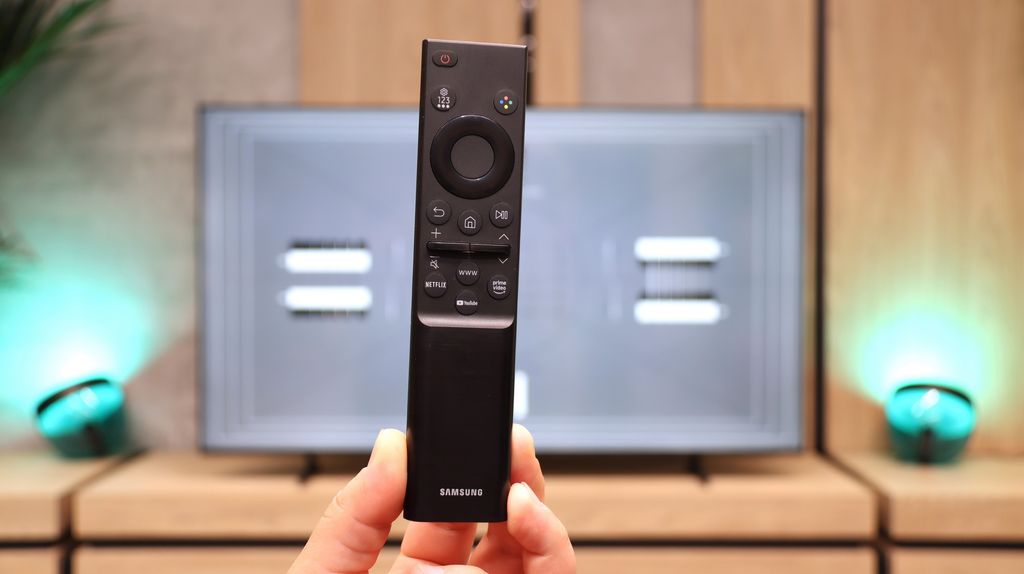
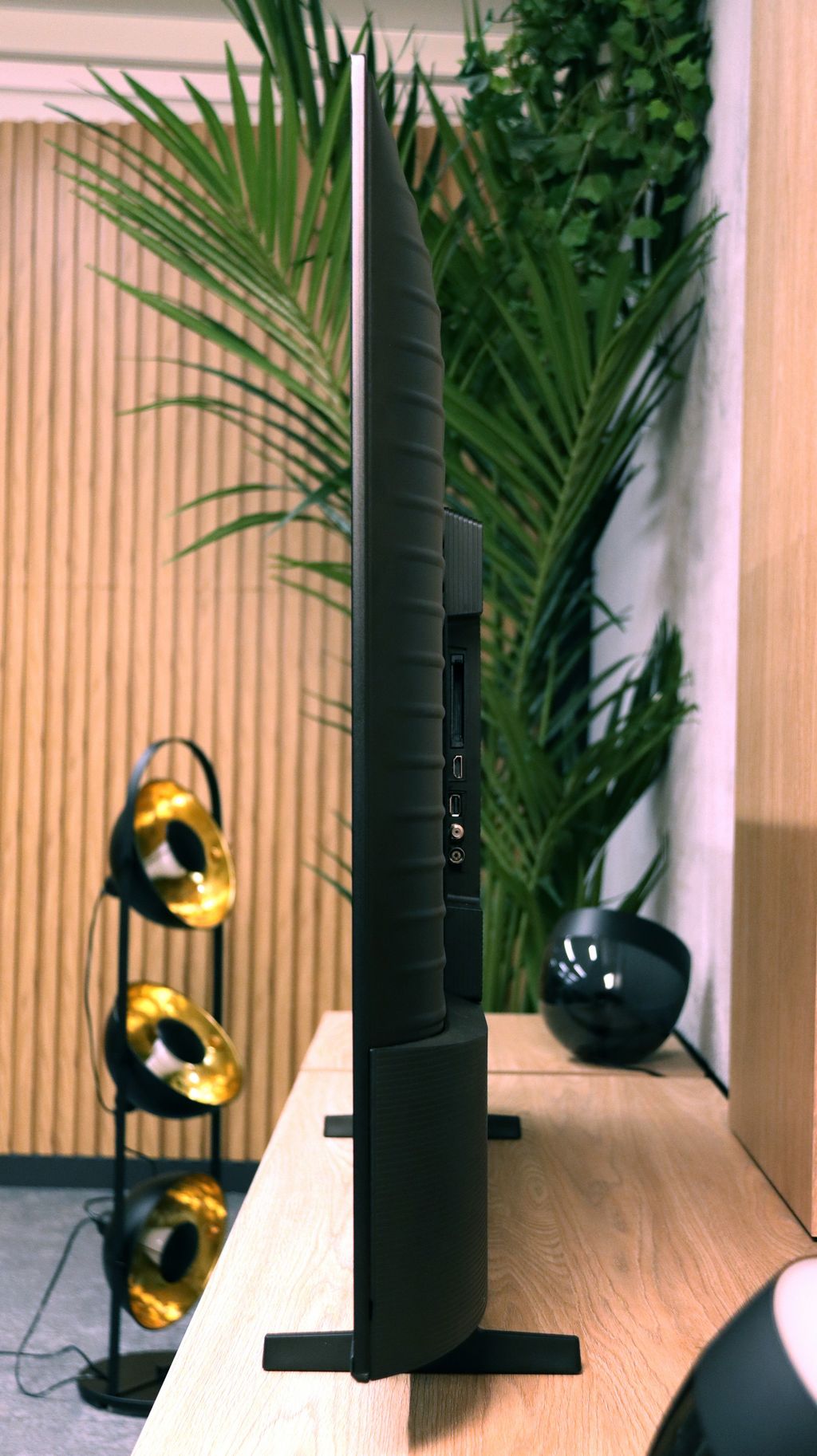
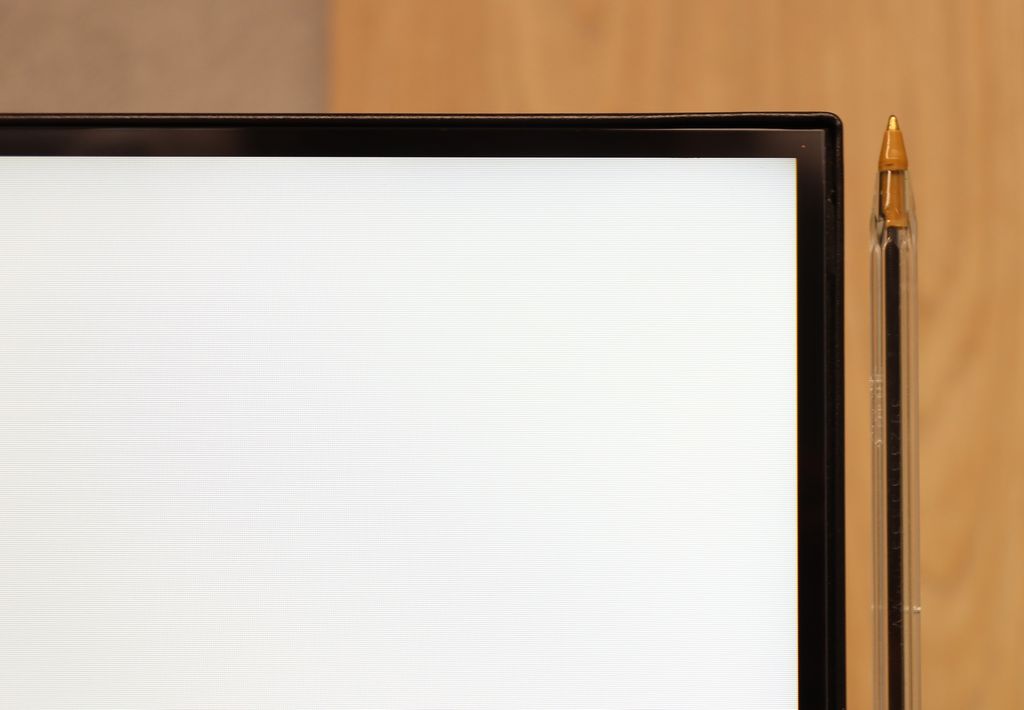
Contrast and black detail
6.3/10
5.3/10
Local dimming function: No
Local dimming function: No
Contrast:

Result
8,300:1

Result
7,200:1

Result
6,200:1

Result
6,500:1

Result
6,200:1

Result
4,600:1

Result
4,150:1

Result
3,900:1

Result
3,750:1

Result
3,400:1
Halo effect and black detail visibility:

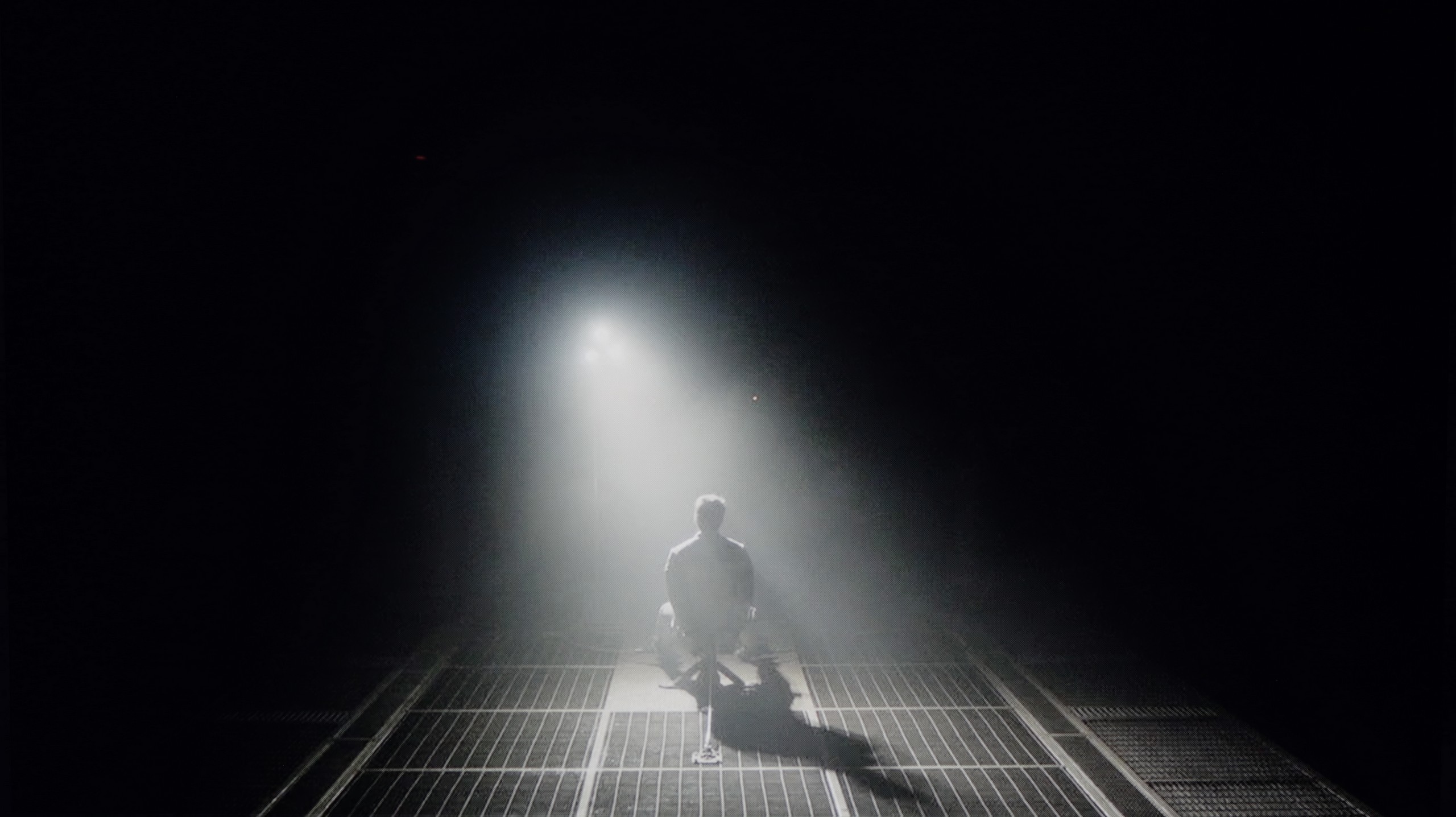

The Hisense A7NQ uses a VA panel, which by definition offers better contrast than IPS, and indeed – it performs quite well here. With a contrast ratio of around 6500:1, the image has a perceptible depth, and scenes like the one from Oblivion can look really good. We see decent separation of lights from the darker areas of the image. However, there is one "but" – the lack of local dimming. In this price range, it's of course normal, but unfortunately, it affects the quality of blacks. In some scenes, the blacks take on blueish hues instead of that truly deep, inky black. It’s not anything dramatic, but if we watch films in a dark room, the differences can be more noticeable. In short, the contrast is good for a VA panel – it's solid. For the average user, this will be more than sufficient, especially in well-lit rooms. There are no fireworks here, but it's a fair result for this class of equipment.
It is worth noting that the test concerns variants with a VA panel, which perform considerably better in terms of black levels and contrast than the 55-inch version equipped with an IPS panel. Thanks to the higher native contrast (although it is not a top result among VA panels), the tested scenes looked significantly better – without noticeable greyness or the typical washed-out shadows associated with IPS panels. The black levels in the U8092F model can be considered really good and satisfying, especially in this price range. Of course, we are not dealing with a construction equipped with local dimming, so it is difficult to expect spectacular results in very challenging scenes. On the other hand, we are talking about an exceptionally budget television that performs quite solidly within its category.
HDR effect quality
5/10
3.1/10
Luminance measurements in HDR:

Result
295 nit

Result
348 nit

Result
379 nit

Result
315 nit

Result
348 nit

Result
212 nit

Result
173 nit

Result
265 nit

Result
90 nit

Result
250 nit
Scene from the movie “Pan” (about 2800 nits)


Scene from the movie “Billy Lynn” (about 1100 nits)


Static HDR10


Dynamic: Dolby Vision
Dynamic: HDR10+


HDR luminance chart:
Samsung U8000F (VA)
Luminancja HDR
Luminance of RGB colors
Hisense A7NQ
Luminancja HDR
Luminance of RGB colors
We checked how the Hisense A7NQ performs with HDR, and there are no surprises here. The luminance graph showed a maximum brightness level of 370 nits. The result? Exactly what one could expect – average. At around 350 nits, HDR does not particularly stand out compared to SDR. Indeed, there is a subtle difference in more brightly lit scenes, but it is not an effect that leaves you stunned. As for the coverage of the wide colour gamut, the result was 92% for DCI-P3 and 70.2% for BT.2020. These are decent values for a TV in this class, which uses a PFS coating – the same one that is sometimes promoted as QLED. Colours look good, but we shouldn’t expect something that competes with the best screens on the market. HDR on the Hisense A7NQ is more of an addition than a "game changer." For those looking for solid image quality on a moderate budget – quite acceptable. However, if we expect full HDR capabilities, it is worth looking at models from the higher price range.
While the U8000F with a VA panel can still be praised for decent blacks, there is no longer any reason to be enthusiastic about brightness – especially in HDR scenes. The television achieves a maximum of just under 250 nits, which is simply too low to speak of any impressive light effects. Bright elements appear pale, and scenes that should sparkle look rather flat. We observed an interesting situation during the test of a scene from the film Sicario 2 – the screen became noticeably darker, as if the television was trying to hide its limitations in displaying blacks. One might get the impression that the device artificially darkens the image to enhance contrast, but in practice, the effect makes very little difference, other than the fact that we see less on the screen. Furthermore, there is the issue of colours – the U8000F does not support a wide colour gamut, so one cannot count on the vibrant, saturated hues known from better models. The HDR image here resembles slightly brightened SDR and... perhaps that is even a good thing. With this model, it is not worth expecting a cinematic experience – it is better to treat HDR as a modest addition.
Factory color reproduction
6.1/10
6.5/10


Factory Mode
After calibration
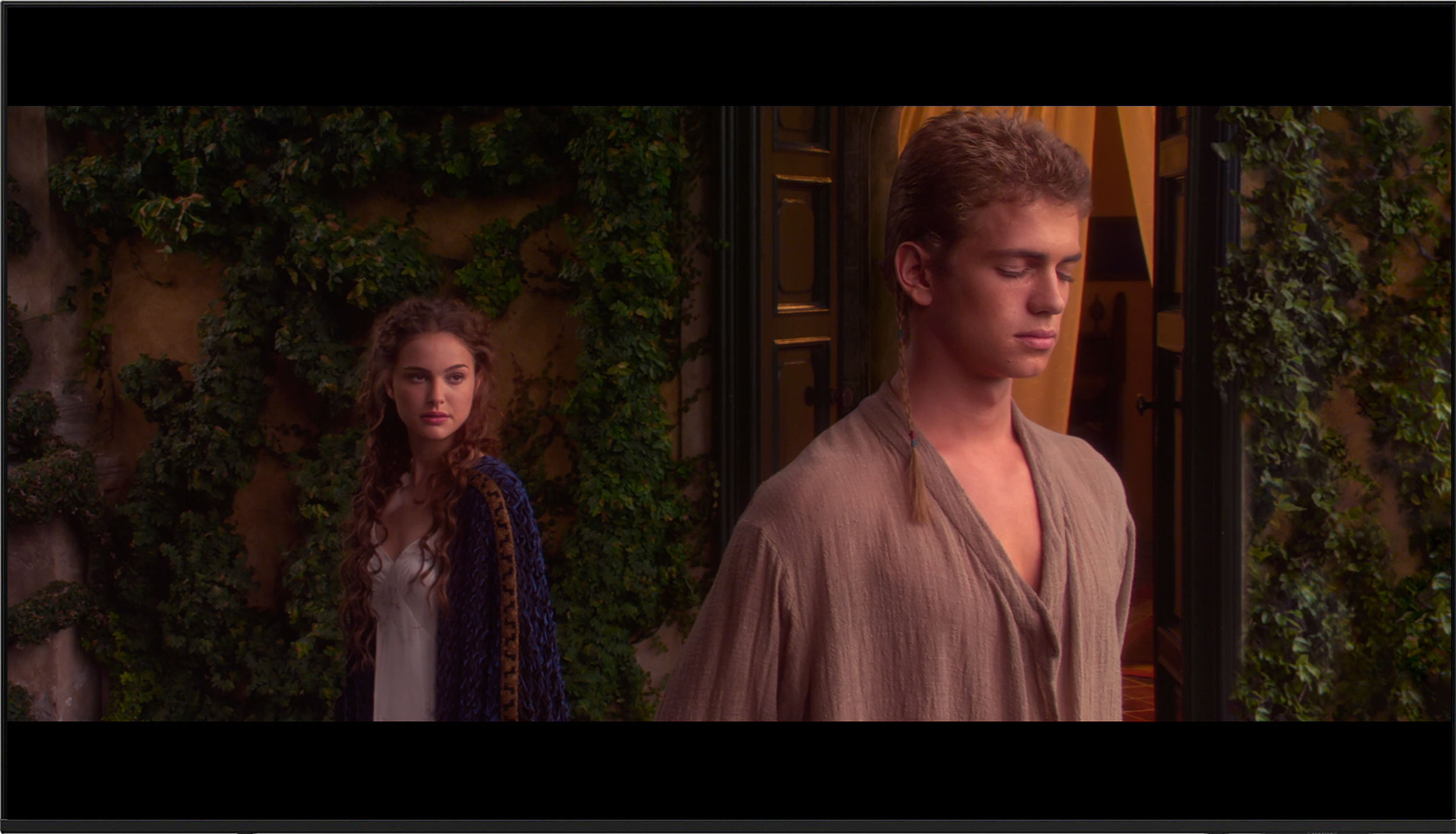
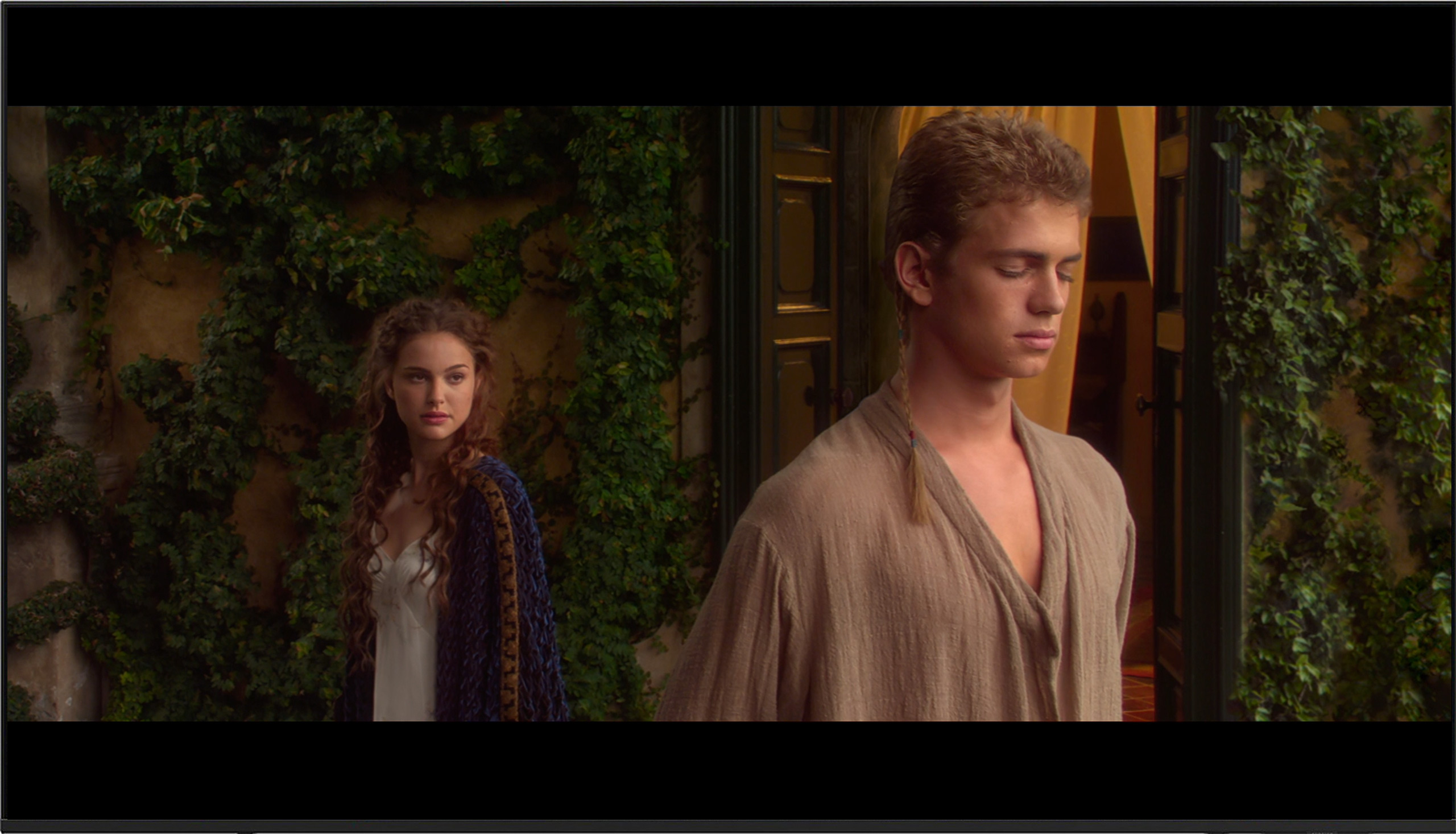
Factory Mode
After calibration
When testing the Hisense A7NQ in Filmmaker mode, we were hoping for compliance with the manufacturer's assumptions, but unfortunately, reality looks different. The main issue, as with most televisions, is white balance. In the case of the A7NQ, we noticed a clear dominance of blue, which affected both lower quality materials and 4K HDR content. The results of the Color Checker tests confirm this, and the comparative images speak for themselves – the leading actress in "factory" mode appears cool and pale. It looks as if she has been drained of life.
As for brightness characteristics, both gamma and the EOTF curve show that the image is excessively bright. As a result, everything appears flat, lacking depth and contrast. This state of affairs definitely does not work in favour of the A7NQ and makes the viewing experience in factory mode leave much to be desired. If we expect natural colour reproduction and appropriate image depth, the A7NQ in Filmmaker mode is unlikely to impress us. It is a television that requires considerable adjustment to bring out its potential.
The Samsung U8000F has been tested by us in the best picture mode it offers out of the box – the Filmmaker Mode. This profile is theoretically meant to provide a neutral, cinematic image devoid of unnecessary enhancements and artificial beautifications. In the case of SDR content – primarily in HD or SD resolution – the television performed surprisingly decently right out of the box. The only noticeable flaw was brightness management. The gamma chart showed some deviations – slight brightening or dimming of certain tones – but in practice, this did not significantly affect the viewing experience. Considering the television's segment, it performs quite well.
However, the situation is much weaker in HDR mode. While the white balance was still acceptable, the colour inaccuracies were very apparent. In the Color Checker test, almost every sample was outside the target point, and the image itself appeared unnatural – the colours were shifted, sometimes too cool, other times simply dull and lifeless. The main problem lies in the hardware limitations – the U8000F does not support the wide colour gamut of DCI-P3, so it is physically incapable of reproducing the colours that the HDR standard anticipates. Unfortunately, this is evident in almost every more demanding scene.
Color reproduction after calibration
7.6/10
7.5/10




Hisense A7NQ offers several tools that allow for improved image quality, so we decided to take matters into our own hands and "dig around" in the settings a bit. Thanks to professional tools and measurements, we managed to correct the white balance, eliminating the excessive dominance of blue colour in both HD and 4K materials. This is a significant step forward, as in the Color Checker test, the colour reproduction errors in lower quality content dropped to a much more acceptable level. Unfortunately, the 4K materials still fall short of perfection – the colour inaccuracies are considerable and stem from the limitations of the television.
As for the gamma, we managed to set it at the correct level, which significantly reduced the excessive brightening of the image. However, the issue with brightness characteristics in 4K content remains unresolved – the EOTF curve still shows excessive brightness across the entire screen. It’s possible that correct implementation of dynamic tone mapping could help here, but as we mentioned earlier, this feature in the Hisense A7NQ works rather poorly, rather than being helpful. Nevertheless, the calibration has significantly improved the overall image reception. The director's vision is now much better represented than in the factory settings, which will certainly be appreciated by more demanding viewers.
Right out of the box, the U8000F offered quite a decent image in SDR for its price class. However, we managed to enhance it slightly – we reduced a subtle purple tint and improved the gamma characteristics, giving it a more natural curve. Despite these adjustments, the television still tends to overly brighten the brightest details – the gamma chart shows a clear inflection that cannot be completely corrected.
In HDR mode, however, it is noticeably weaker. It is hard to speak of any significant improvement here – despite attempts to adjust the settings, the image still presents considerable colour inaccuracies. A Delta E exceeding 7 signifies noticeable deviations that could not be effectively reduced. Unfortunately, this is a limitation of the construction itself – the U8000F simply was not designed for serious HDR. In everyday viewing in SDR, it performs quite well, but when it comes to HDR content... it's best not to have overly high expectations.
Smoothness of tonal transitions
9/10
9.5/10







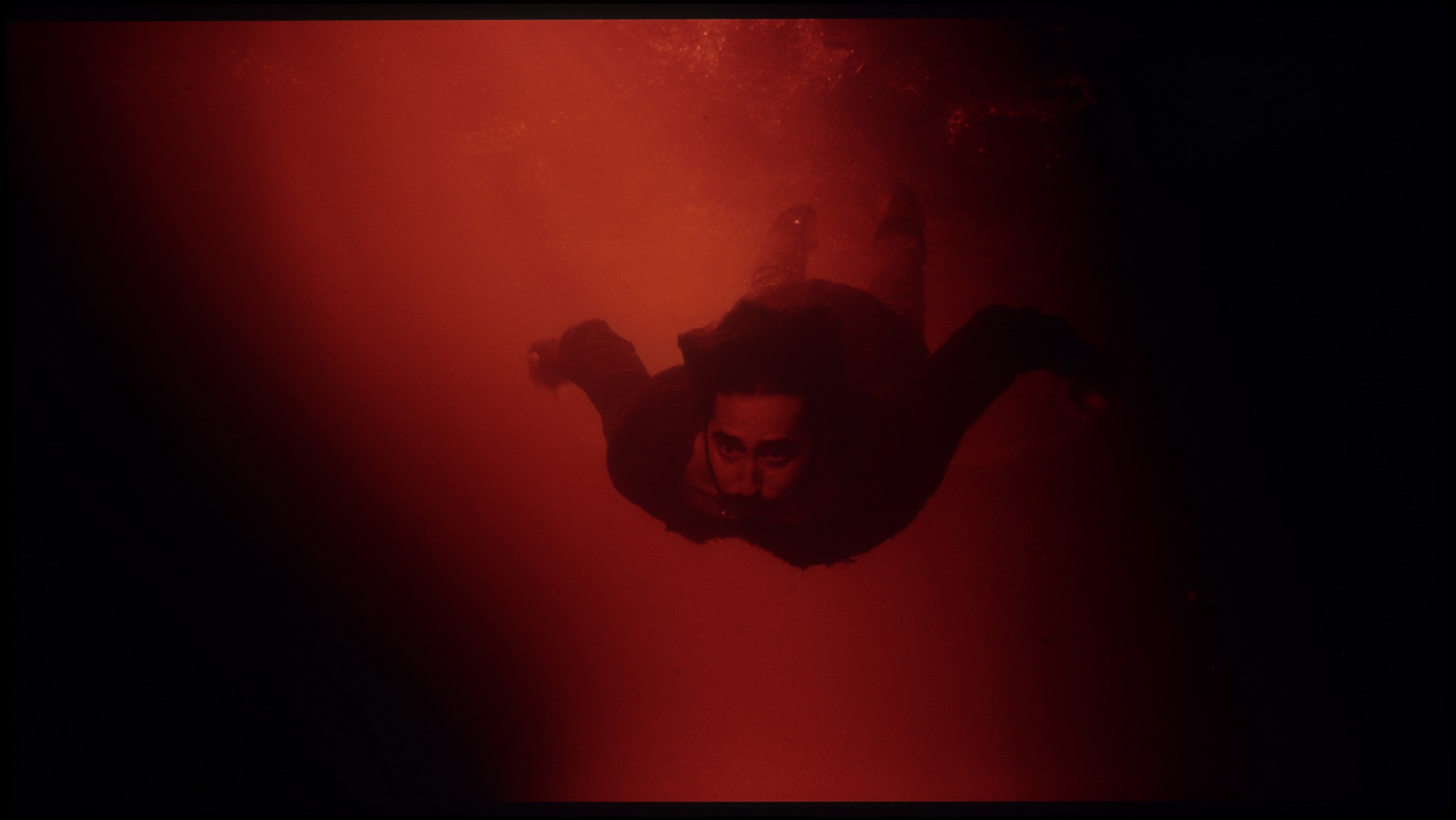




This is one of the greatest advantages of this television. The Hisense A7NQ performs exceptionally well with the fluidity of tonal transitions, even in the most demanding scenes. The colour blends are practically invisible, resulting in very smooth gradations and a naturally looking image. Of course, if we are purists and scrutinise the screen with a "hawk's eye," we may notice slight joins, particularly in the darker areas of the image. However, these are subtle imperfections to such an extent that most users will not even notice them.
One of the significant elements affecting the perception of the image is the way in which the television handles tonal transitions – that is, the blending of colours and shades without clear boundaries. In the case of the Samsung U8092F model, it performed really well. On the test screens, we did not observe visible banding or disturbances in the colour gradients. The image retains a natural character, without excessive digital interference, which unfortunately is often the norm in this class of equipment. Minimal imperfections appeared in very bright areas, but they are practically unnoticeable and do not affect everyday use of the television.
Image scaling and smoothness of tonal transitions
5.5/10
5/10
Smooth transition function

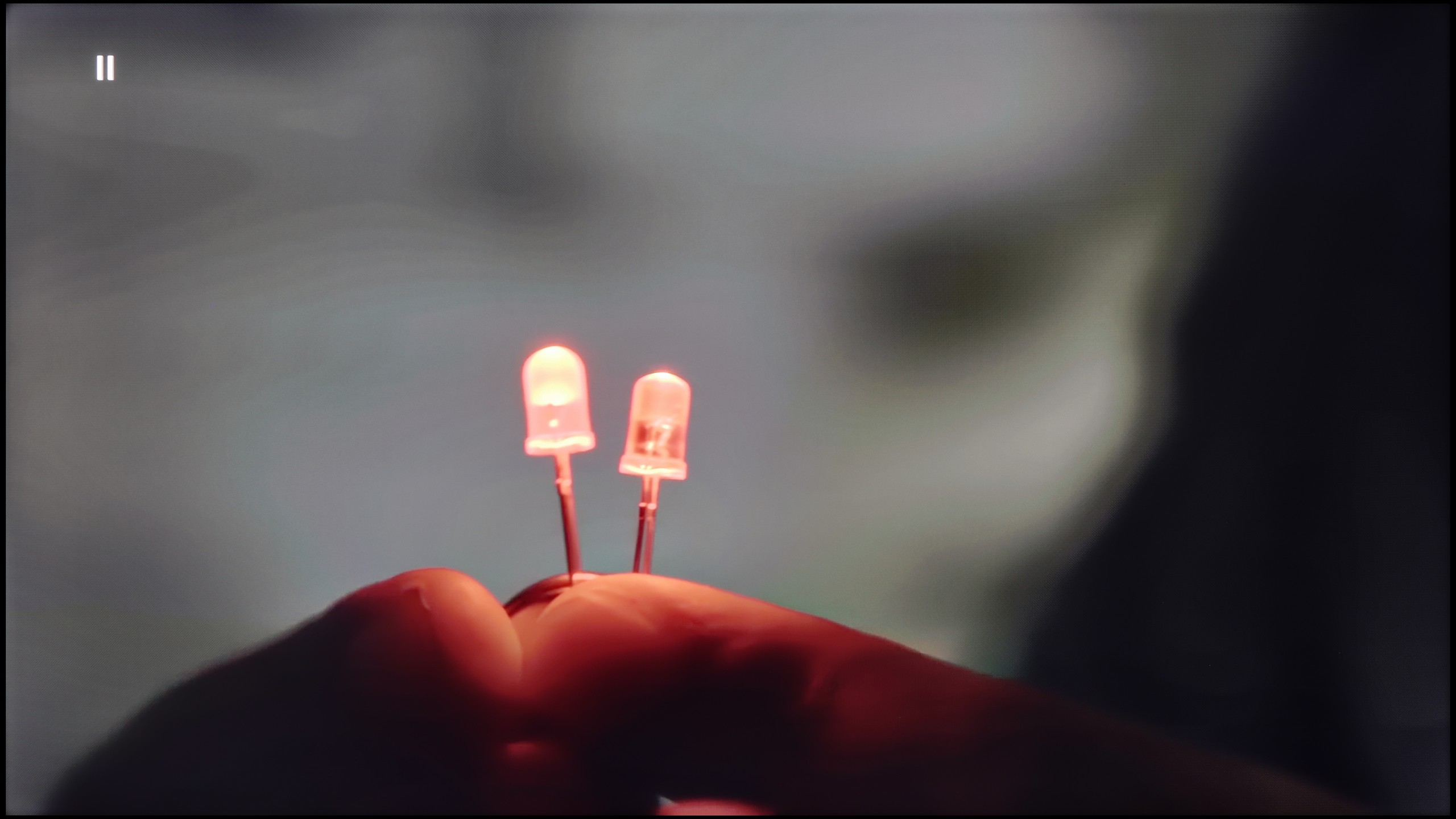
Image without overscan on the SD signal


The Hisense A7NQ impresses with the smoothness of tonal transitions in 4K content, but unfortunately, there is no feature here to improve this aspect in older materials of lower quality. In such cases, colour transitions become more visible, which can slightly detract from the overall image, especially in scenes with a lot of gradients.
When it comes to upscaling, the television performs surprisingly well. The image is noticeably improved, although there are some compromises. It can be seen that the television adds a bit of artificial sharpness, and background elements, such as branches, display slight "jaggies." However, these are details that will primarily catch the eye of those who pay attention to such nuances.
When it comes to how the Samsung U8000F handles lower quality materials, we must admit that Samsung has made progress compared to its predecessor from last year – the DU7192 model, which theoretically occupies the same position in the lineup. This year's model has been equipped with a feature to improve the fluidity of tone transitions, which has been implemented much better than last year. Indeed, the television still utilizes quite strong algorithms that can distort details or remove film grain, but nonetheless – it can confidently be said that it works effectively. However, not everything has gone perfectly. The U8000F has noticeable issues with slightly cutting the image when watching very old content in very low resolution. If someone plans to play their old VHS tape, they must reckon with the fact that the image may appear slightly "cut off".
Blur and motion smoothness
3.8/10
5.5/10

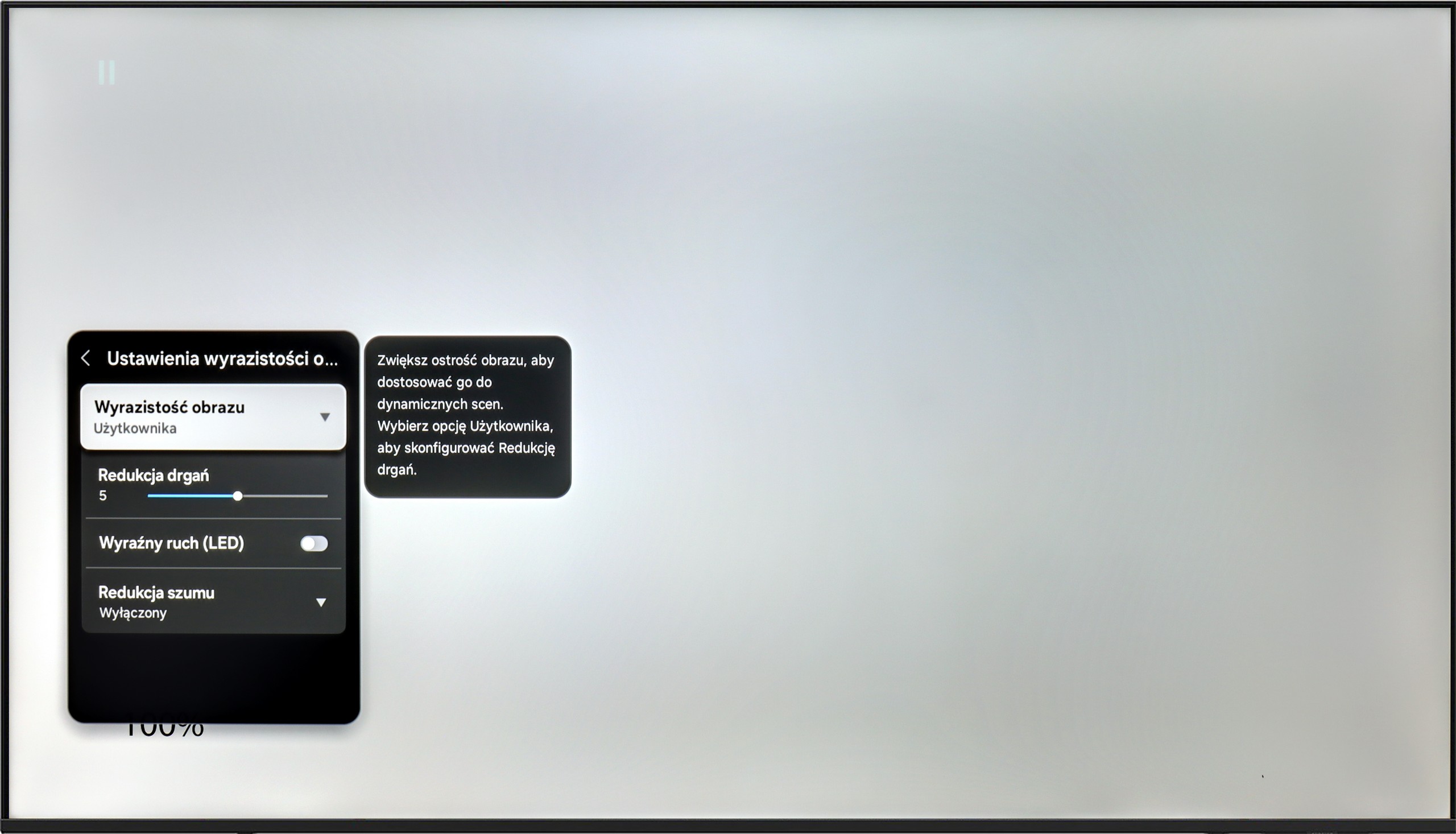
Blur (native resolution, maximum refresh rate):






Blur (BFI function enabled):
Image flickers in this mode



Smużenie ():
Smużenie (Upłynniacz ruchu 4K@60Hz):
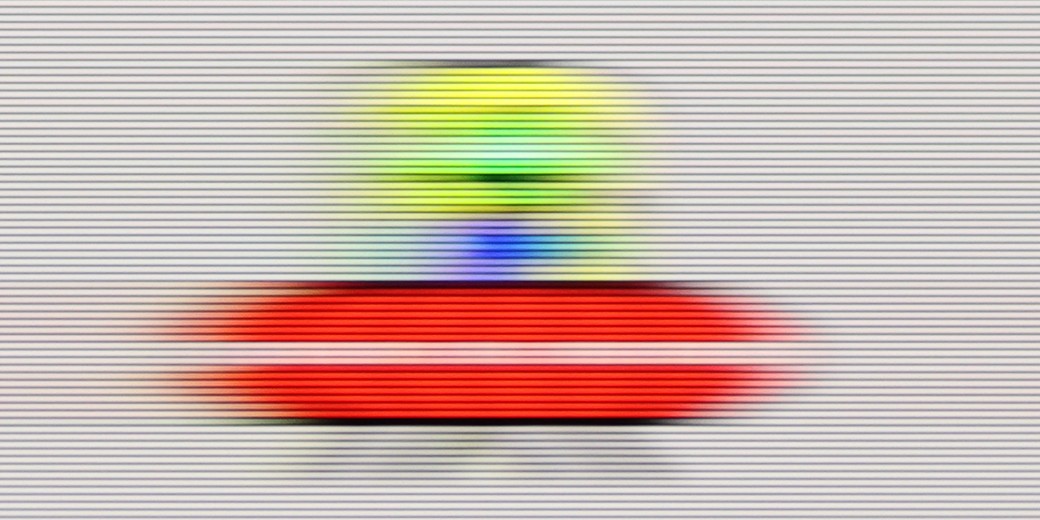
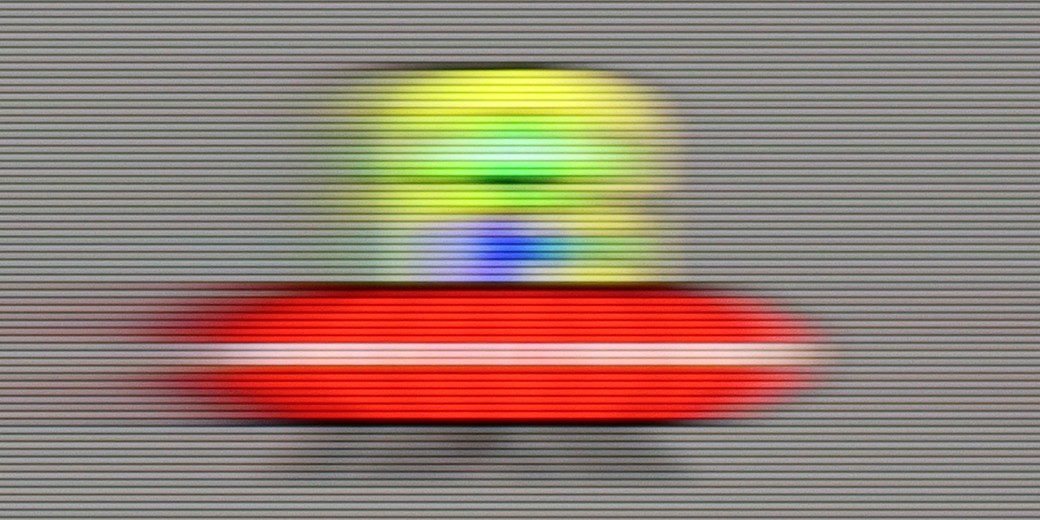

The Hisense A7NQ is equipped with a 60 Hz panel, which means that dynamic scenes – for example in sports or games – perform rather averagely here. This is standard for this class of equipment, but it must be acknowledged that watching more intense, fast-moving content can leave a lot to be desired. However, when it comes to films, the television offers a motion smoothing feature that operates on a 10-point scale. The "judder reduction" option allows you to tailor the smoothness of the image to your own preferences. At the lowest setting, we get a natural film frame rate, which will please cinema purists. Meanwhile, the maximum setting provides a very smooth, theatrical image that may appeal to those who prefer a more "smoothed" motion.
The Samsung U8000F is equipped with a 60 Hz panel, so it's clear right from the start that one shouldn't expect miracles. This is simply the standard in this class – adequate for everyday viewing, but without any fireworks. The television offers a single motion smoothing slider – a feature called "Motion Blur Reduction," which allows us to adjust the smoothness of the image in films. Higher settings produce a more "theatrical" and smoothed effect, while lower settings help retain the film's original character with a slight 24p effect. An interesting feature is "Clear Motion LED," which is the BFI mode – inserting black frames between image frames to improve motion clarity. In practice, however, the screen flickers heavily when this feature is activated and should rather be considered an experiment than something that genuinely enhances gaming comfort.
Console compatibility and gaming features
6.3/10
4/10
- ALLM
- VRR
- VRR range48 - 60Hz48 - 60Hz
- Dolby Vision Game Mode
- Correct implementation of HGIG
- 1080p@120Hz
- 1440p@120Hz
- 4K@120Hz
- Game bar

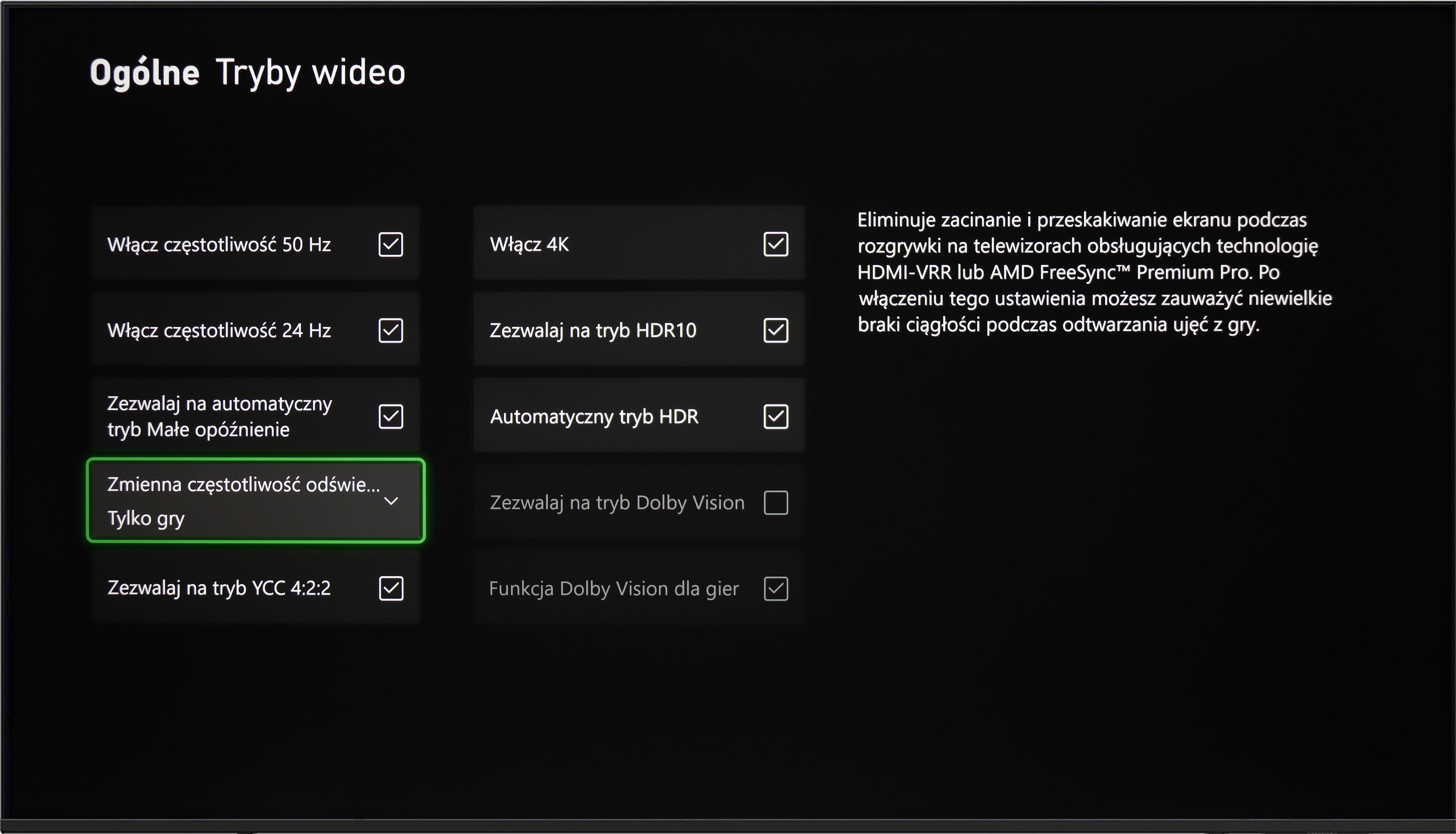

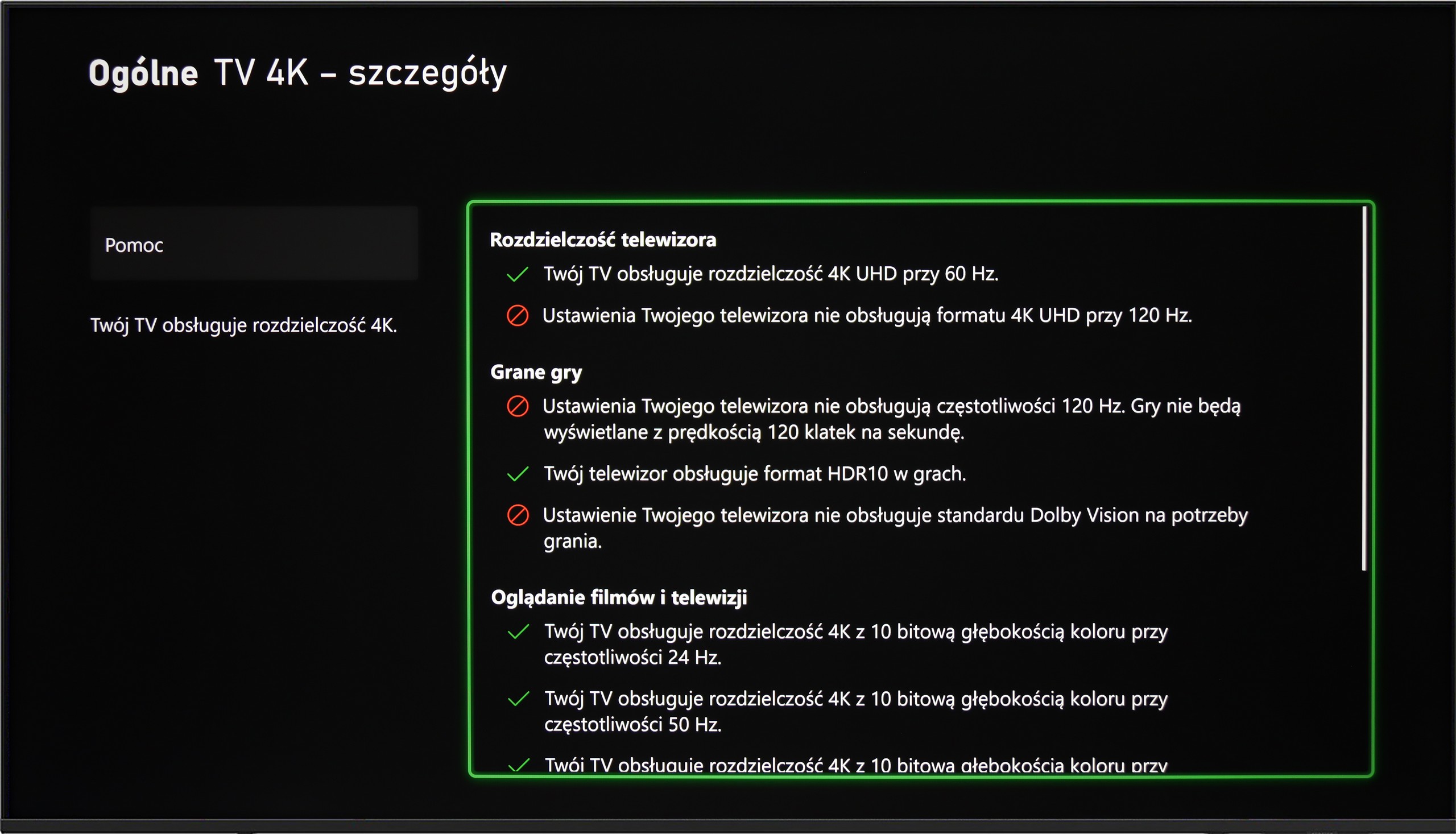

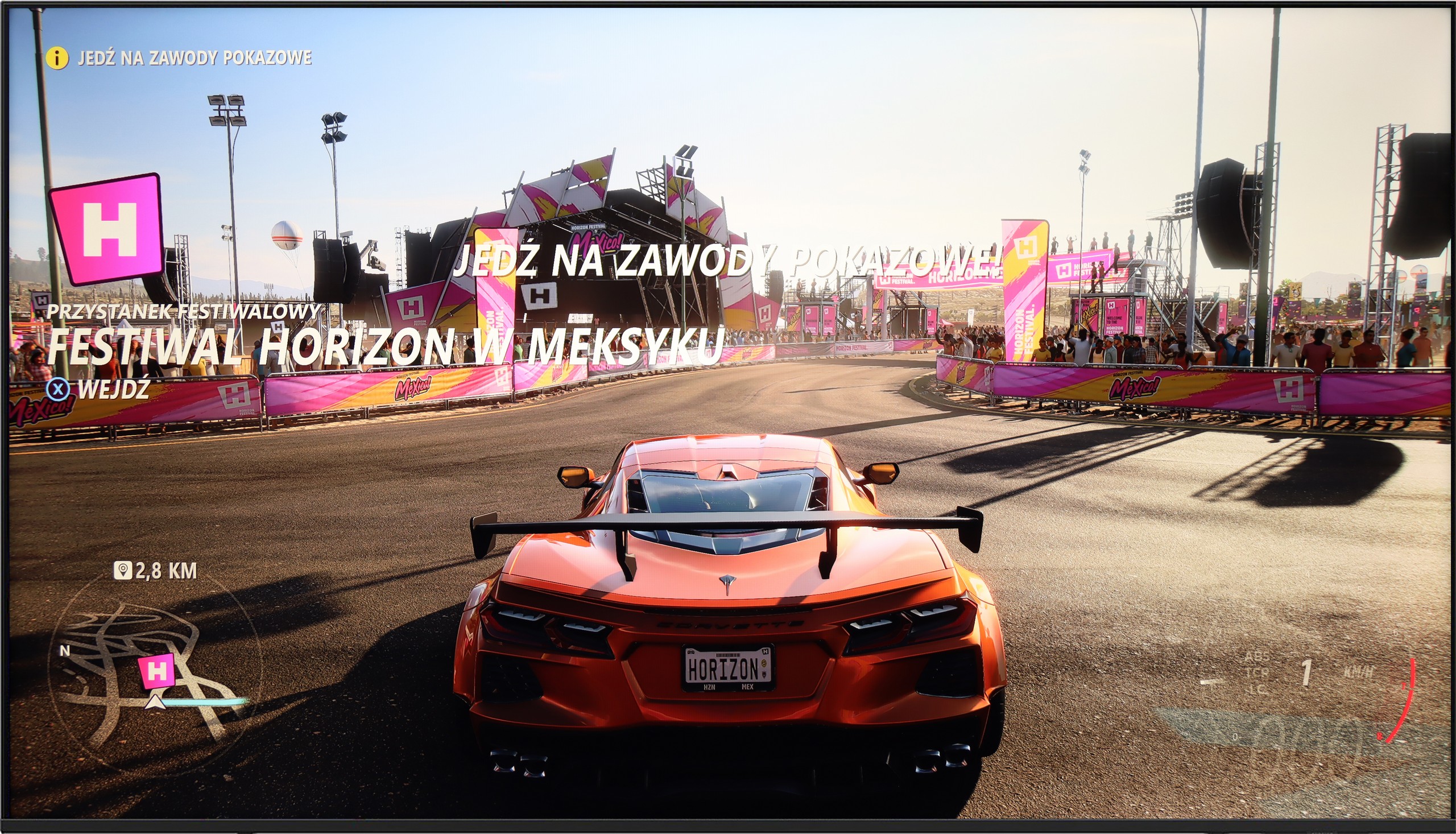

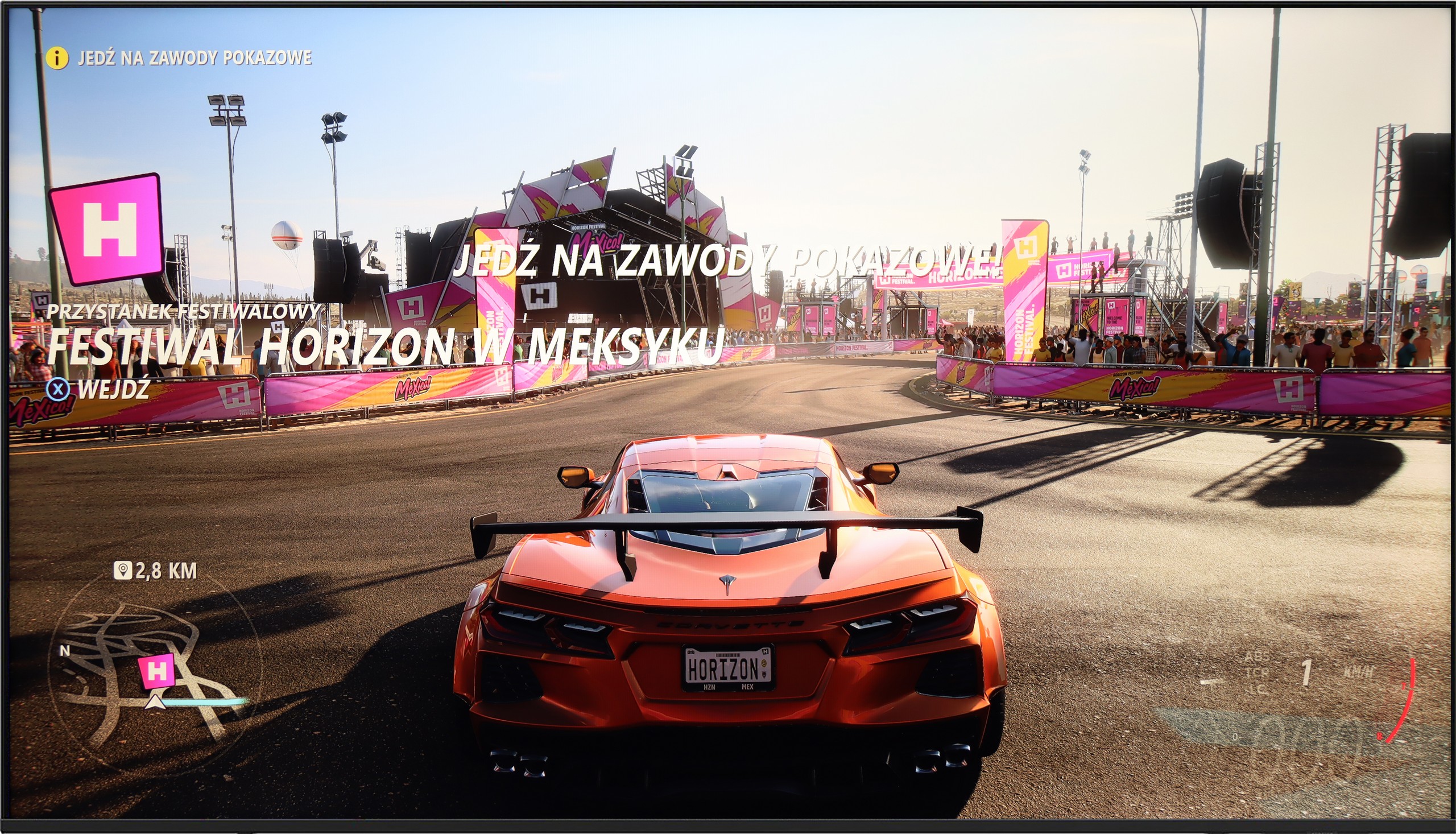
Hisense A7NQ is a piece of equipment that can pleasantly surprise gamers, although it is not without its flaws. The fact that we have a 60 Hz panel here immediately suggests that the television is not designed for the most demanding gaming scenarios. The motion blur that we described earlier can also be an obstacle, especially in dynamic games.
However, there are a few things that are worth praising. The television supports ALLM (automatic game mode) and VRR (variable refresh rate), which is not always standard in this price range. The biggest surprise, however, is that the A7NQ can display images at 120 Hz – albeit only in Full HD resolution, but nevertheless, it's a significant nod to gamers. This provides the option to choose between smoothness and resolution, which is not obvious in televisions at this price.
A nice addition is the Game Bar, which is clear and practical – all the most important functions are at hand, without digging through the settings. However, it lacks support for HGiG, which may be a disappointment for gamers looking for perfect HDR in games.
Samsung U8000F offers a basic set of features for gamers, which may still be sufficient for less demanding users. It includes an automatic game mode – when a game is launched on the console, the television automatically switches to low latency mode, significantly improving response times. There is also a VRR feature, or variable refresh rate, which operates in the range of 48 to 60 Hz. This means that both Xbox and PS5 will not produce the "tearing" effect – as long as we stay within this range.
Unfortunately, that’s about it for the advantages. Additions like Game Bar or higher refresh rates are reserved for higher-end Samsung models from the 2025 line. In theory, the television also supports the HGiG feature, which should adjust HDR imagery to the creators' intentions. Unfortunately – despite the fact that this feature appears in brochures and promotional materials – its configuration on the Xbox console turned out to be... impossible in practice.
Input lag
9.9/10
10/10
SDR
HDR
Dolby Vision
The Hisense A7NQ definitely has something to boast about when it comes to input lag. It is really very low, which is immediately noticeable while gaming – both in standard game mode and with Dolby Vision enabled. Regardless of the settings, the response is instantaneous, making controls in games smooth and responsive. This is definitely a plus for any gamer who doesn't want to worry about delays. Even more dynamic gameplay on this television won't be a problem. In this category, the Hisense A7NQ truly stands out from the competition.
The Samsung U8092F performed phenomenally in our input lag tests. Regardless of the resolution, the results were very low, which is truly impressive for this price segment. One can confidently say that gaming on this television will not cause irritation due to large delays between what we do on the pad and what we see on the screen. For most gamers, even the more demanding ones, this result should be more than satisfactory.
Compatibility with PC
5.8/10
6/10


The Hisense A7NQ performs well if we want to use it as a work monitor. Thanks to 4:4:4 chroma support, the fonts are clear and readable, regardless of the background. This is a significant advantage, as working with documents or browsing websites on this television is quite enjoyable. When it comes to gaming on PC, the situation is less optimistic. The 60 Hz panel unfortunately doesn't allow for a smoother experience, which may disappoint gamers looking for something more. Even the presence of G-SYNC and low input lag does not change the fact that dynamic titles may look average.
Working on a computer using this television is a true pleasure. The Samsung U8092F supports chroma 4:4:4, and despite being a VA panel, the text readability is very, very good. The television is also suitable for occasional gaming on PC, mainly due to its low input lag. However, it should be noted that the G-Sync feature does not work on this model, which is strange as VRR operated without problems when it came to consoles.
Viewing angles
3/10
3.7/10
The Hisense A7NQ does not surprise in this category. The viewing angles are typical for a VA panel – which means that if we sit directly in front, everything looks fine, but if we shift slightly to the side, the image begins to lose quality. Colours become less saturated, and black starts to turn to shades of grey. This is standard for VA panels, and it is rather difficult to expect anything different. Therefore, if we plan to watch television with a larger group of people, it is worth considering positioning the television so that everyone has a chance to sit as close to the centre of the screen as possible.
TV efficiency during daytime
4.9/10
3.8/10

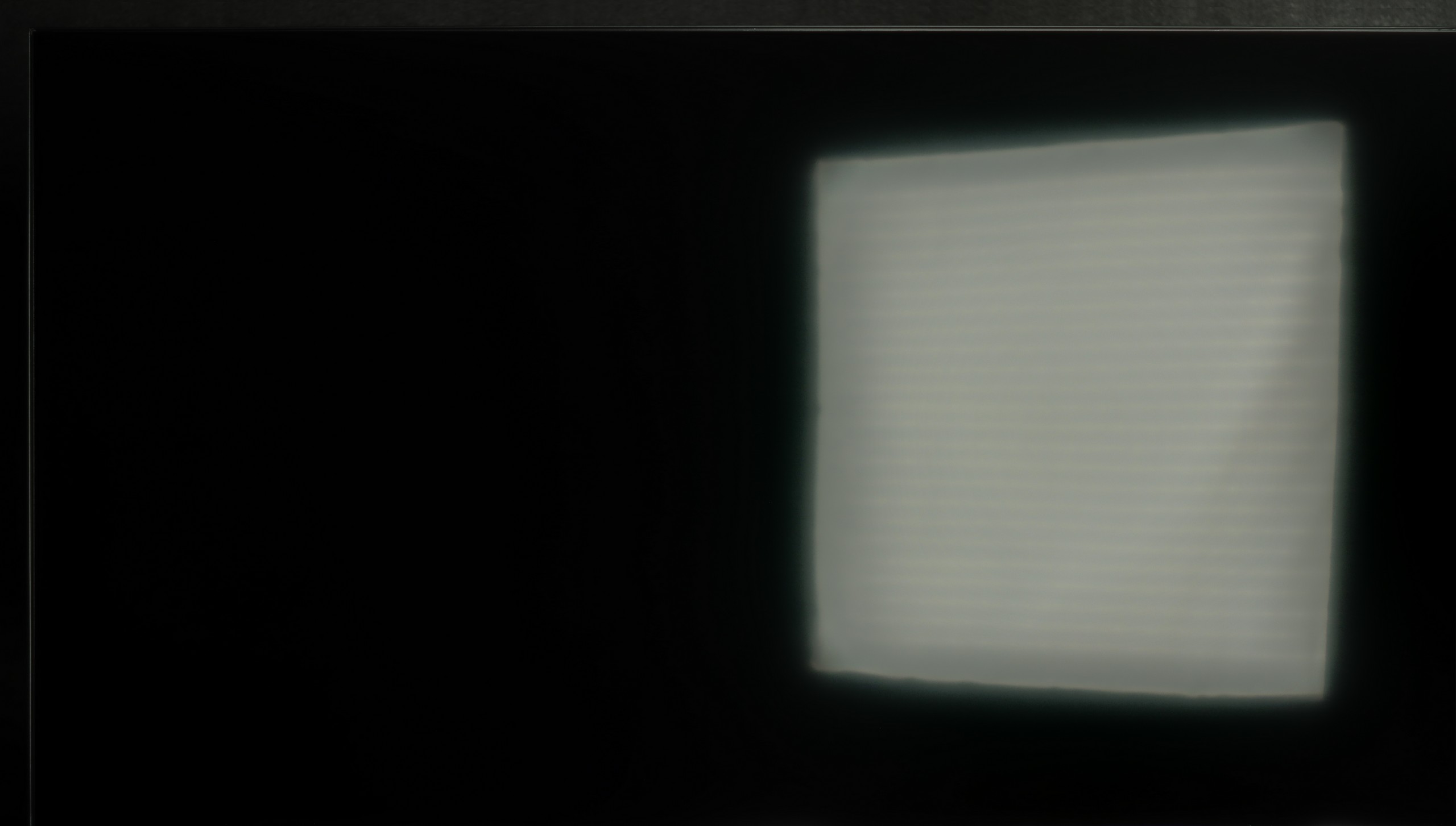

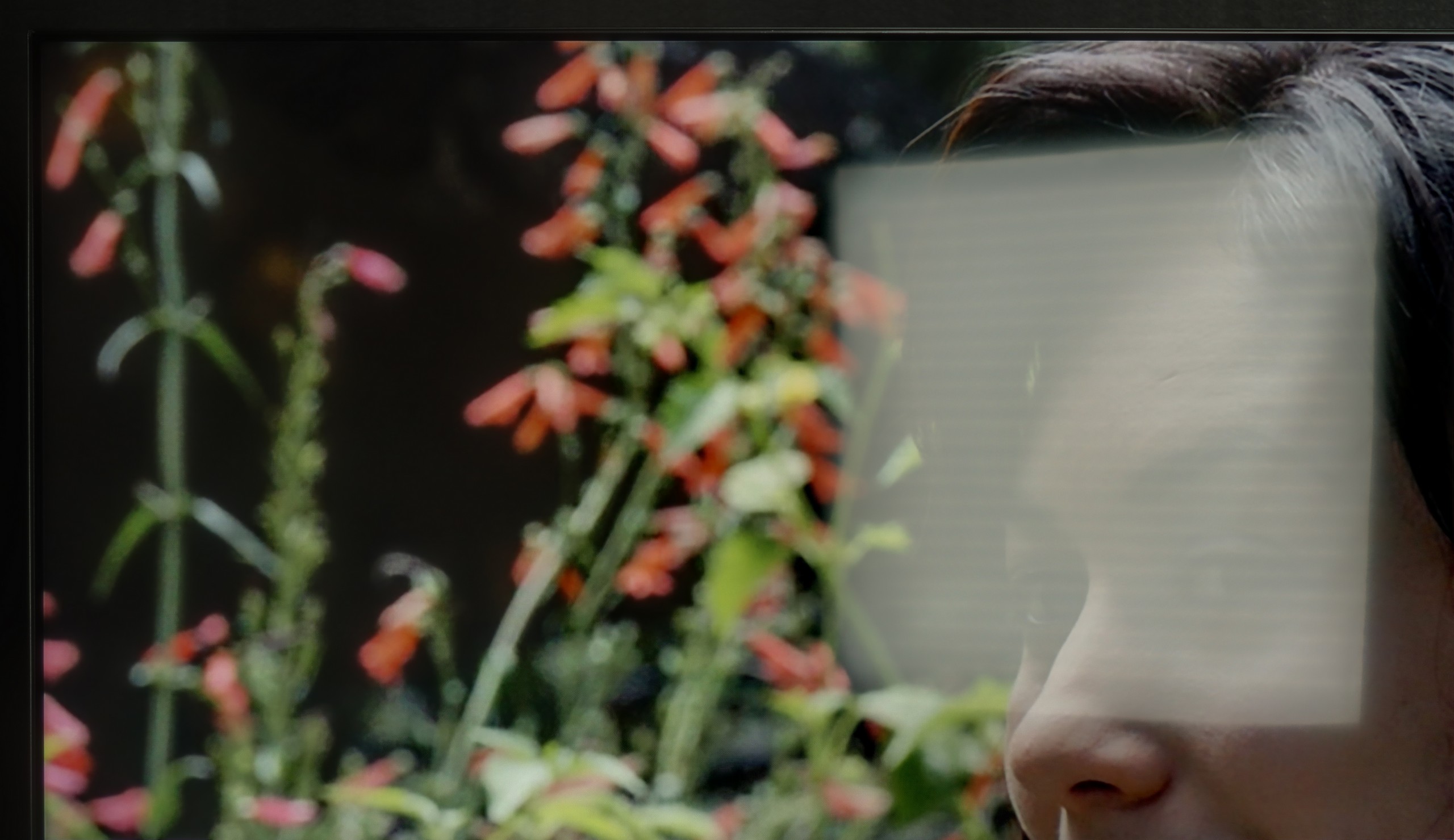
Matrix brightness
Average luminance SDR
Samsung U8000F (VA): 204 cd/m2
Hisense A7NQ: 371 cd/m2
The Hisense A7NQ does not make the best impression in brightly lit rooms. The panel performs averagely at reducing reflections, so if there is a lot of light coming in through the windows, the screen can turn into a mirror. Additionally, the brightness level of 370 cd/m² is only suitable for moderately sunny rooms. In more demanding conditions, where the sun lights up the screen, the image begins to lose visibility and it becomes difficult to see all the details. If we plan to use the television mainly during the day in a brightly lit room, it is worth considering this, as in such conditions the A7NQ may not be the best choice.
Thanks to the satin finish of the Samsung U8092F matrix, it handles glare quite well. The screen does not act like a mirror, and the colours – given the capabilities of this class of device – remain relatively saturated, even in slightly brighter conditions. Unfortunately, the coating itself won't work wonders. The television is simply too dark to effectively penetrate very difficult lighting conditions. If we place it facing a light source (e.g. a large window or a strong lamp) – unfortunately, one must consider that not everything will be clearly visible on it.
Details about the matrix
Subpixel Structure:

Panel uniformity:

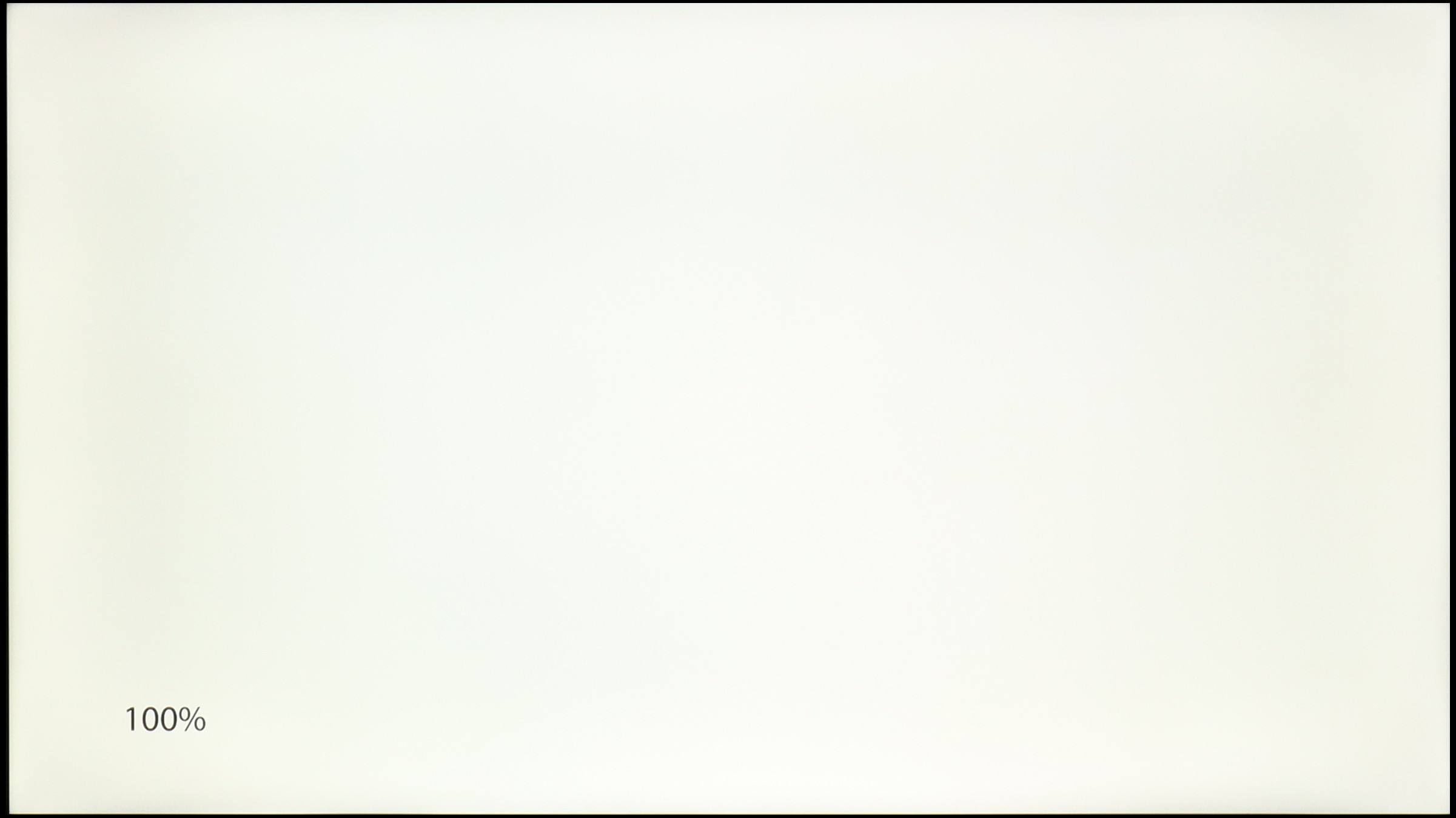
TV features
8.7/10
5.5/10
- HDMI inputs3 x HDMI 2.0, 0 x HDMI 2.13 x HDMI 2.0, 0 x HDMI 2.1
- Other inputsRCA (Chinch)
- OutputsToslink (Optical audio), eARC (HDMI), ARC (HDMI), Mini-Jack (Headphones)eARC (HDMI), ARC (HDMI)
- Network InterfacesWi-Fi 2.4GHz, Wi-Fi 5GHz, Ethernet (LAN) 100MbpsWi-Fi 2.4GHz, Wi-Fi 5GHz, Ethernet (LAN) 100Mbps
- TV receptionDVB-T, DVB-T2, DVB-S, DVB-S2, DVB-CDVB-T, DVB-T2, DVB-S, DVB-S2, DVB-C
Classic features:
- Recording to USB (terrestrial TV)
- Recording programming
- Picture in Picture (PiP)
- RF remote control (no need to aim at the screen)
- Backlit remote control
- Teletext
- Audio only mode
- Possibility to connect Bluetooth headphones to the TV
- Possibility to simultaneously use Bluetooth headphones and the TV speaker
Smart features:
- AirPlay
- Screen mirroring (Windows Miracast)
- Wyszukiwanie głosowe
- Voice search in native language
- Ability to connect a keyboard and mouse


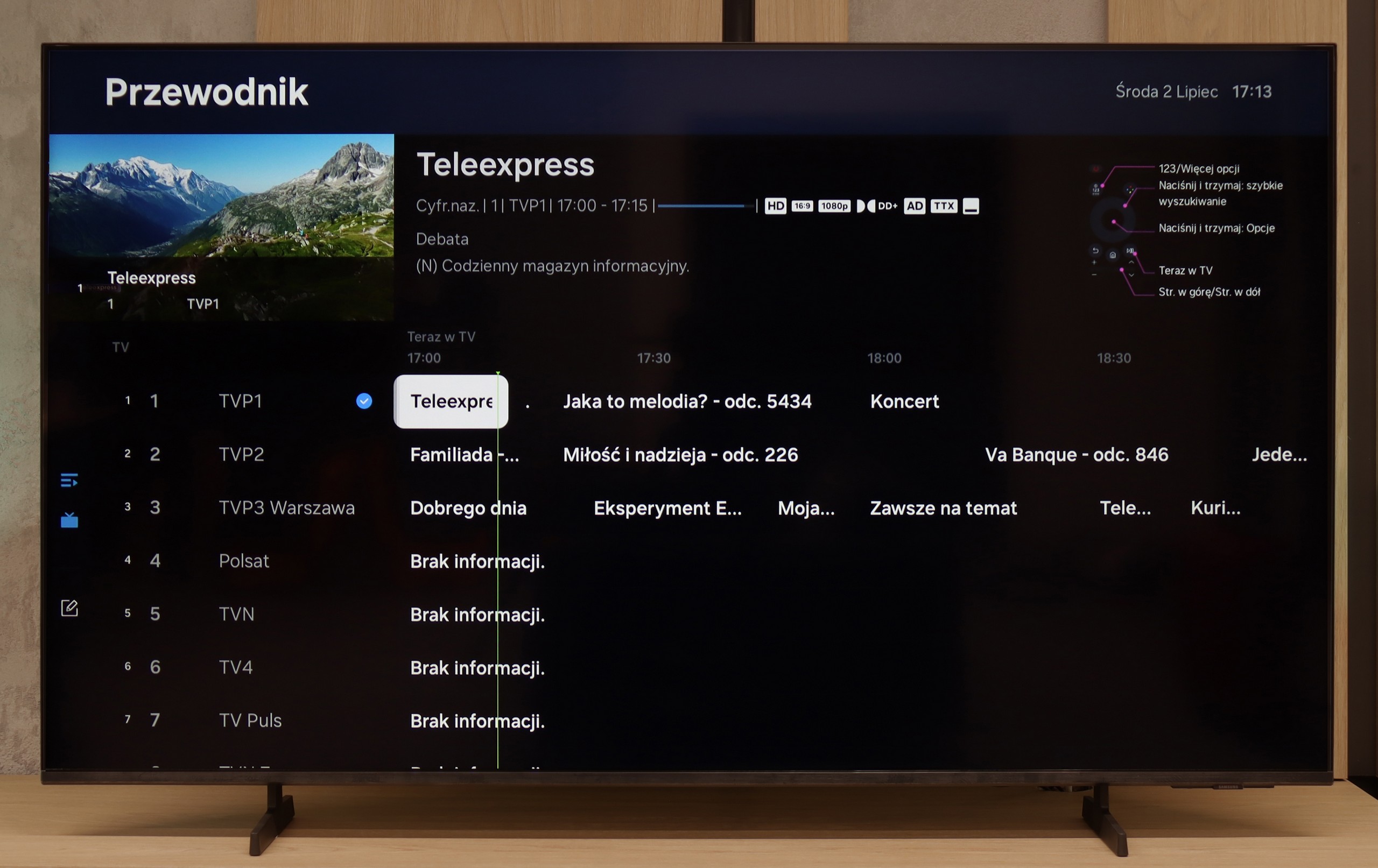
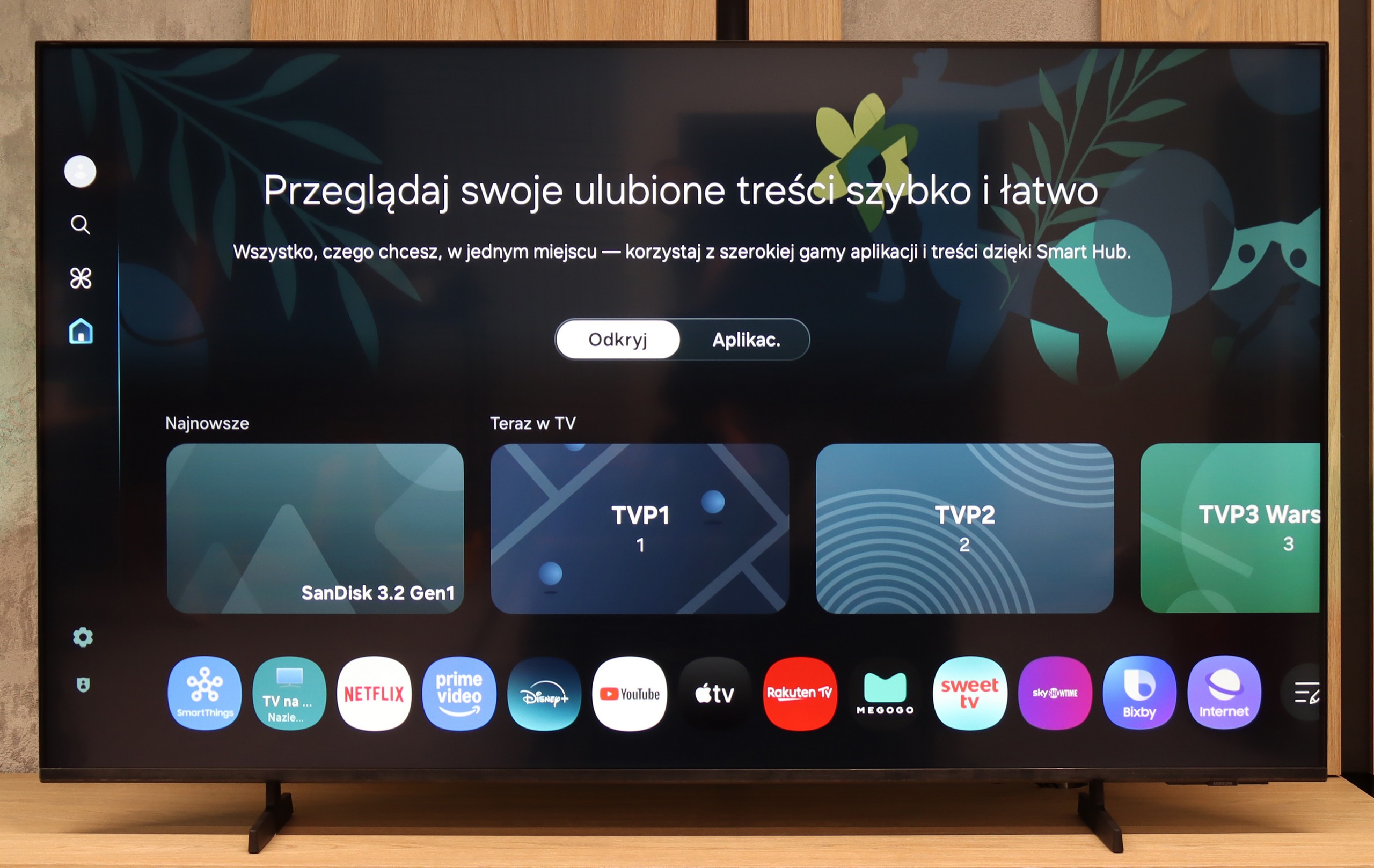
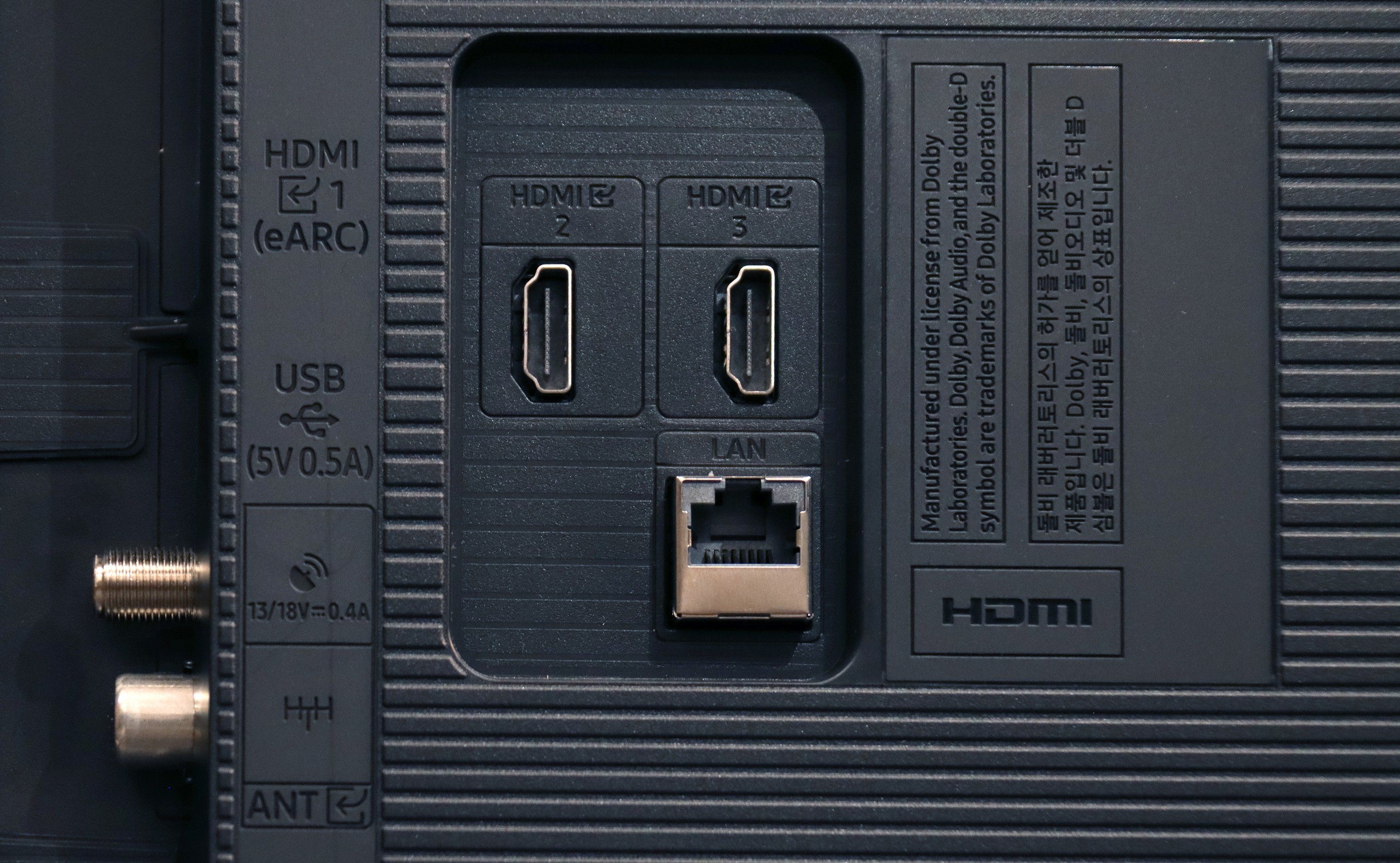
Hisense A7NQ runs on the Vidaa system, which may not be as developed as those from Korean giants, but it does what it needs to. It is clear that Hisense is starting to understand the Polish market – the latest updates have added the most important streaming applications. We can easily find the most popular streaming applications here. Unfortunately, if someone is counting on Tidal or Spotify, they will not find them here – it's a bit of a shame, as it would further complement the system. The Vidaa system itself works surprisingly smoothly. The menu is simple, and voice control in Polish is a nice touch that makes daily use easier. There are no unnecessary complications, everything is at hand, and it works without significant delays.
In terms of features, the television also performs well. Recording to USB works thanks to the built-in tuners, and connecting additional devices via Bluetooth or USB is seamless. AirPlay and Miracast are additional advantages – you can easily stream content from your phone or laptop.
There is, however, a lack of the PiP (picture-in-picture) function, but that is likely something that will only be noticed by those who really need it. Just like recording to USB – it's great that it's available, but not everyone will use it.
Samsung U8092F – like all this year's models from this brand – runs on the Tizen operating system. The system itself is really well developed: we have access to many applications (though not all), a well-developed smart home integration, and various add-ons, including exclusive Samsung applications. Features such as AirPlay and Chromecast are also available, allowing us to easily connect our phone to the television and share multimedia.
Unfortunately, since this is Samsung's cheapest series in 2025, the manufacturer did not choose to include a solar remote control. In the box, we find a classic infrared remote control that visually resembles a newer version, but unfortunately lacks voice functions. As for typical "television" add-ons – there is no recording feature or PiP (picture-in-picture) mode. On the positive side, the HDMI eARC works well, allowing easy control of devices like a decoder or soundbar with the bundled remote – and it indeed works seamlessly.
Playing files from USB
5.5/10
8.7/10
Supported photo formats:
Maximum photo resolution:

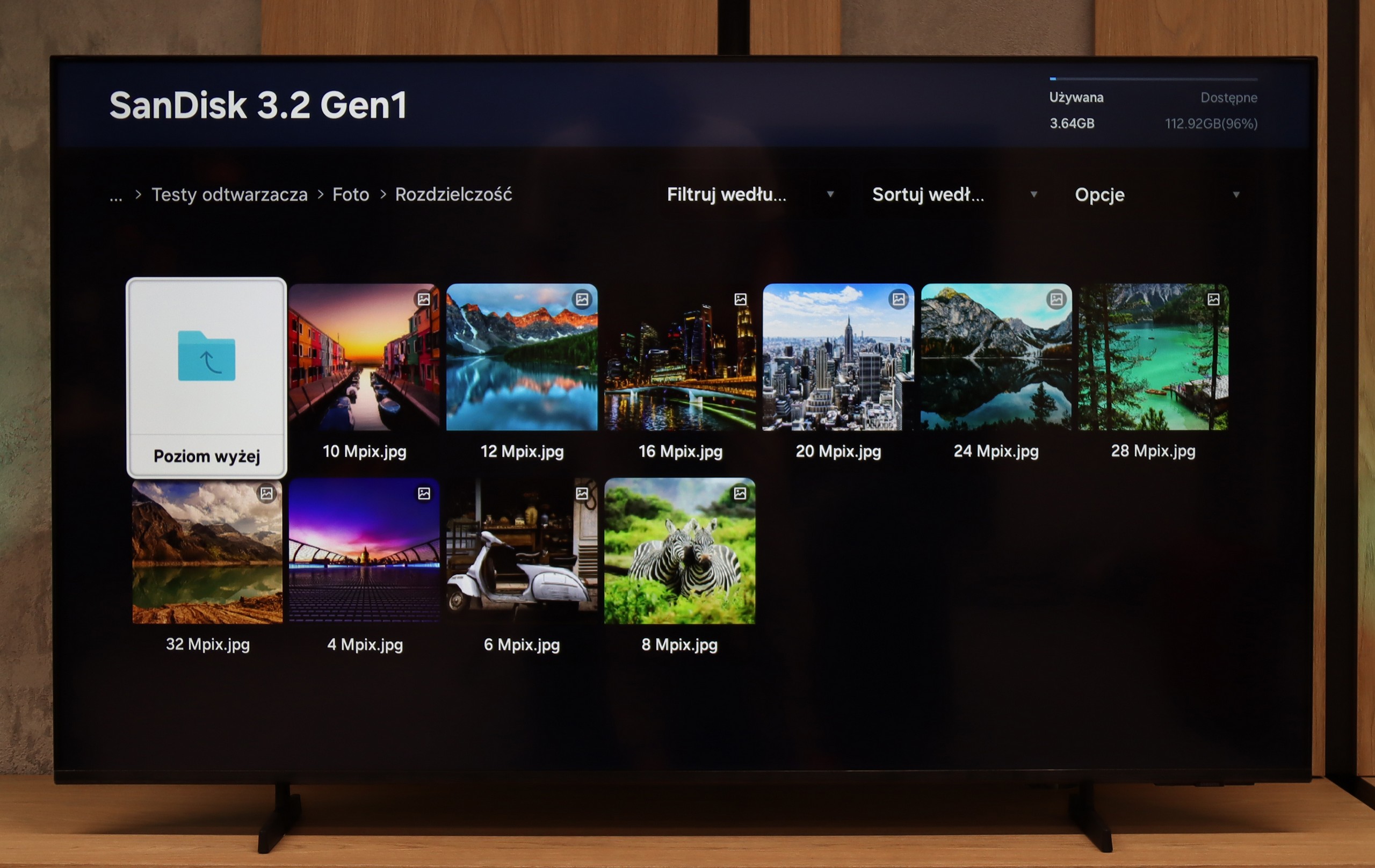
During tests of the USB file player, we encountered something really strange. Normally, we check whether the television can handle external files with subtitles so that one can comfortably watch foreign productions in Polish. Unfortunately, despite the presence of various subtitle formats on our pendrive, the television did not display any of them. Interestingly, there was an option in the menu to change the font colour, so it seems that the feature should be functioning. We believe this is a matter to be fixed in an update, but for now the situation is simply strange and somewhat concerning. As for other types of files, things are much better. The television handles most popular audio and photo formats, so playing music or browsing holiday photos will not pose a problem.
Samsung U8092F handles the playback of files quite seamlessly – the television supports most popular audio and video formats. Of course, it does not support Dolby Vision, but this is simply not found in any Samsung model.
Certain reservations can be made regarding the support for external text files – those that the user would like to add as subtitles to a film. During our tests, the television only played TXT files, while other extensions such as SRT or SUB unfortunately did not work. This may not be a problem for everyone, but it is worth knowing. Perhaps this is an issue to be improved in the future through a television operating system update.
Apps
7.7/10
8.7/10














































Sound
5.9/10
5.7/10
- Subjective sound quality:5.9/105.7/10
- Dolby Digital Plus 7.1:
- Dolby True HD 7.1:
- Dolby Atmos in Dolby Digital Plus (JOC):
- Dolby Atmos in Dolby True HD:
- DTS:X in DTS-HD MA:
- DTS-HD Master Audio:
The Hisense A7NQ performs like most mid-range televisions – it's acceptable but without much excitement. The sound meets its purpose in everyday use, but if we expect strong sensations, it is worth considering adding a soundbar. On the positive side, the television supports practically all popular surround sound formats, including Dolby Atmos and DTS:X. This means that if we have the appropriate external equipment, we can enjoy a more immersive sound experience.
U8092F does not pretend to have home cinema on board. We receive a standard set of 2 x 10 W, which sounds decent, but without much excitement, though with a slight bass. For everyday viewing, this audio setup is entirely sufficient. We were positively surprised that it managed to play a film with the built-in Dolby Atmos (JOC) codec – although of course, we are not talking about true surround sound here.


